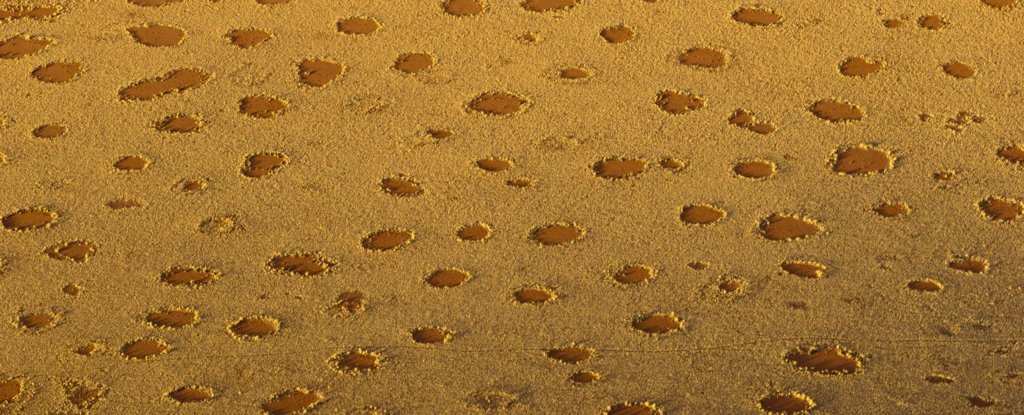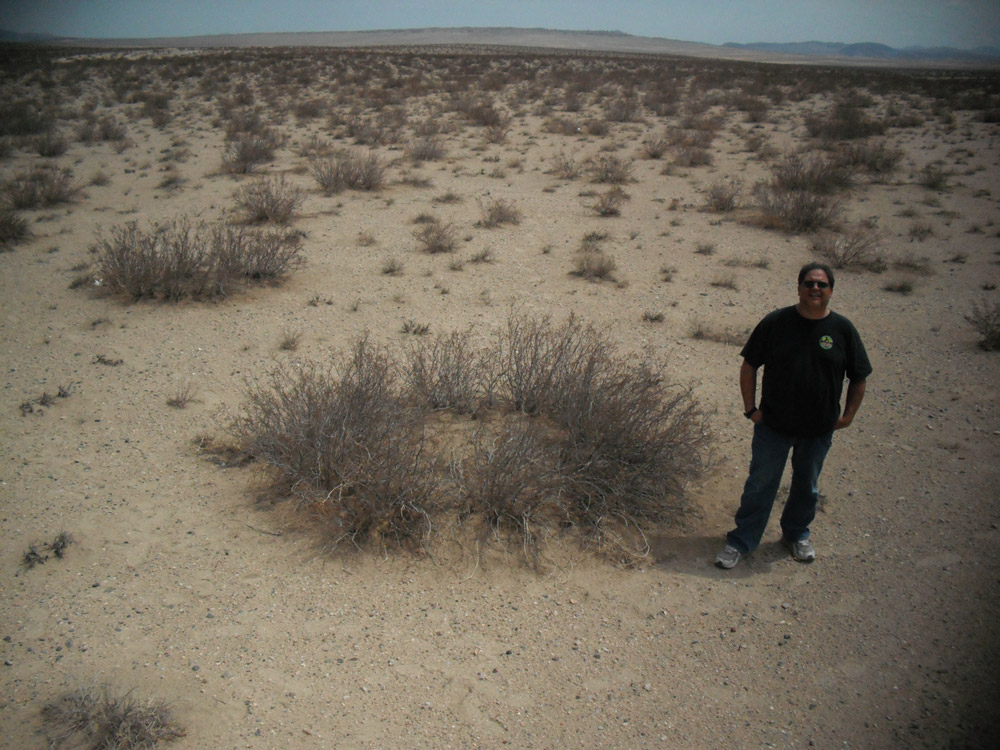
Posted on 09/24/2020 12:11:09 PM PDT by Red Badger
It was 1952, and Alan Turing was about to reshape humanity's understanding of biology.

Fairy circles in Namibia. (pum_eva/Getty Images)
==============================================================================
In a landmark paper, the English mathematician introduced what became known as the Turing pattern – the notion that the dynamics of certain uniform systems could give rise to stable patterns when disturbed.
Such 'order from disturbance' has become the theoretical basis for all sorts of strange, repeated motifs seen in the natural world.
It was a good theory. So good, in fact, that decades later, scientists are still discovering stunning examples of it in unusual and exotic places: real-world Turing patterns brought to life in locales that Turing himself never had a chance to see.
The latest incarnation of this theoretical phenomenon turns out to be fairy circles – mysterious formations of desert grass that grow around distinctly circular patches of arid soil, first documented in the Namib desert of southern Africa.

Drone image of Australian fairy circles. (Stephan Getzin/University of Göttingen)
============================================================================
Explanations for their existence range from the mythical to the mundane, and as recently as a few years ago, their origins were still being debated. Early on, one view held that the strange circles were due to termite activity under the African soil – but the subsequent discovery of fairy circles in the Australian outback complicated the narrative, demonstrating fairy circles could be found with no firm link to termites.
Alternatively, scientists have proposed that fairy circles are the result of plants arranging themselves to make the most of limited water resources in a harsh, arid environment.
It sounds plausible, and if true, would also happen to be another naturally occurring example of a Turing pattern. But there's not a lot of empirical evidence to actually support the hypothesis, researchers say, because the kinds of physicists who tend to model the Turing dynamics of these systems rarely end up also conducting field work in the desert in support of their ideas.
"There is a strong imbalance between the theoretical vegetation models, their a priori assumptions and the scarcity of empirical proof that the modelled processes are correct from an ecological point of view," a team led by ecologist Stephan Getzin from the University of Göttingen in Germany explains in a new paper.
To bridge that gap, Getzin and fellow researchers walked the walk, using drones equipped with multispectral cameras to survey fairy circles from overhead near the mining town of Newman in the Pilbara region of Western Australia.
According to one of the team's hypotheses, a Turing pattern arrangement of fairy circles would be stronger among grasses with a greater dependency on moisture.
Analysing the spatial separation of both high- and low-vitality grasses, and using moisture sensors to check readings at the ground, the team found that healthier, high‐vitality grasses were systematically more strongly associated with fairy circles than low‐vitality grasses.
In other words, for the first time, we have empirical data to suggest that fairy circles are a match for Turing's decades-old theory.
"The intriguing thing is that the grasses are actively engineering their own environment by forming symmetrically spaced gap patterns," Getzin says.
"The vegetation benefits from the additional runoff water provided by the large fairy circles, and so keeps the arid ecosystem functional even in very harsh, dry conditions. Without the self-organisation of the grasses, this area would likely become desert, dominated by bare soil."
According to the researchers, the grasses that make up fairy circles grow together in a cooperative fashion, modulating their environment to better cope amidst the near-perpetual dryness of an extremely arid ecosystem.
The team says even more field work will be required to further validate the mathematical models, but for now, it looks like we might be closer than ever to closing the book on this mysterious phenomenon.
"By forming periodic gap patterns, the vegetation benefits from the additional water resource provided by the fairy circle gaps," the authors explain, "and thereby keeps the ecosystem functional at lower precipitation values compared with uniform vegetation."
The findings are reported in Journal of Ecology.
By the Turing test, this process will eventually halt in polynomial time.
So “Fairy circles” are explained by a fairy.
I dunno wanna know about his theory about ‘glory holes’
You had me at, ‘Chanterelles...’ LOL!
One of my BILs is a total Mushroom Hunter. He’s turned us on to so much good stuff growing in our woods.
Is there anything a Mushroom cannot add to a delicious meal?
I think not! :)
Perhaps the roots of a circle of grass grow outward and absorb water between the circles. The cohesive nature of water then pulls water from the surface. Seeds that land in that area may germinate but don’t have enough water to last long.
Some of the locals have a thing for matsutakes...pine mushrooms. I think it’s based mostly on their high-dollar value. I find them to be bland, with some sand thrown in. Chanterelles can be had by the 5 gallon bucket, with a little effort. The coastal rainforest provides lots of opportunities to find edible fungi.
Thanks Red Badger.
Is it possible these plants are like Bamboo, Aspen and other interconnected grasses/plants?
“With God, all things are possible”
“Not all Fairys, can fly!”, olde joke.
Maybe he killed himself because he was a homosexual. They kill themselves at higher rates than normal people no matter how “affirming” the society they live in is.
Like this with Creosote bushes 
I suspect many geniuses have been killed off by their tribe for being “unconventional”.
They are trying to characterize it as structure from randomness when in fact it is a testament to God’s design capability.
Disclaimer: Opinions posted on Free Republic are those of the individual posters and do not necessarily represent the opinion of Free Republic or its management. All materials posted herein are protected by copyright law and the exemption for fair use of copyrighted works.